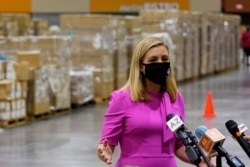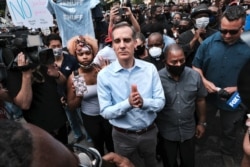America’s cities are in crisis as they cope with negative impacts of the pandemic on their most vulnerable residents, struggling local businesses and public schools, according to a new survey of the nation’s mayors.
“They're really worried about renters and small-business owners in their communities,” says Katherine Levine Einstein, associate professor of political science at Boston University and co-author of the 2020 Menino Survey of Mayors. “They're worried about their residents of color who have been disproportionately impacted by the health and economic effects of the pandemic.”
The survey included mayors of U.S. cities with more than 75,000 residents; 130 mayors from 38 states were interviewed throughout summer 2020. It comes at a time when the nation’s mayors are taking increasing responsibility for dealing with issues such as climate change, affordable housing and infrastructure including roads, mass transportation, water and wastewater.
“We're in this era of incredible partisan polarization at the federal level and so, as a consequence, a lot of our nation's most important policymaking is happening at the local level,” Levine Einstein says. “Local governments are either having to come up with creative solutions or make really challenging cutbacks because they're not receiving the support they need from higher levels of government. They are being tasked with challenging policy issues where they used to ... receive lots of federal support.”
Mayors are checking in with one another during the pandemic, coordinating responses and identifying best practices through a variety of phone calls, group texts and weekly meetings.
COVID-19 has already had a large impact on public schools, and 45% of mayors expect education to take even more hits.
“They don't think schools are going to return to normal within the next year,” Levine Einstein says. “They expect to see dramatic budget cuts to their schools, which is obviously deeply concerning because so many of these pandemic-related requirements for schools have made things more expensive, right? This is like the last thing our public school system needs right now is major budget cuts.”
Half of the mayors surveyed say that arts and culture in their cities won’t return to normal until after 2021. More than 40% think that’s also true for colleges, universities and mass transit.
“I think for the most part, there's this deep concern about what will be left in terms of our economic institutions or public institutions, how much human suffering we're going to see over the next few months,” Levine Einstein says.
The mayors are also bracing for the longer-term impacts of COVID-19 — like what will happen to their downtowns if large numbers of people decide to keep working from home even after the pandemic.
“Their central business districts may change in fundamental ways as the nature of work changes and both businesses and workers realize that they don't necessarily need to be in their offices every day to work productively,” Levine Einstein says.



